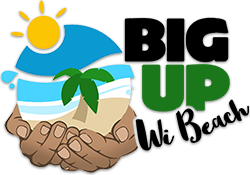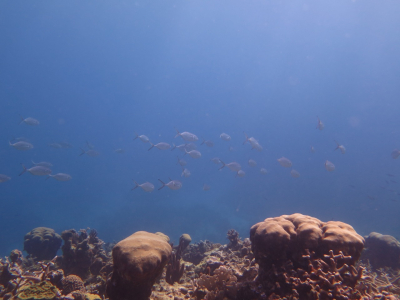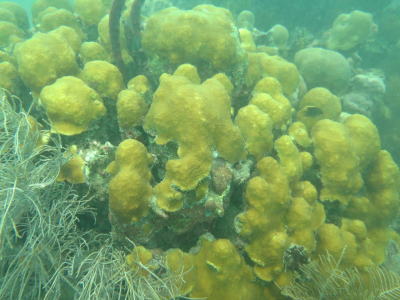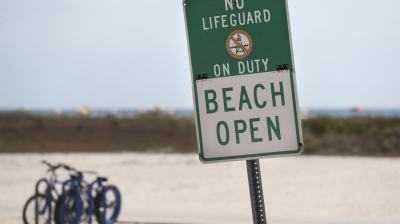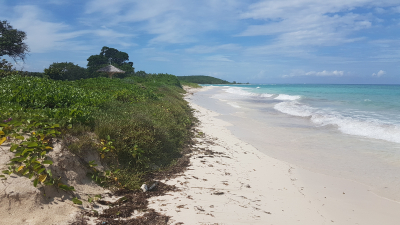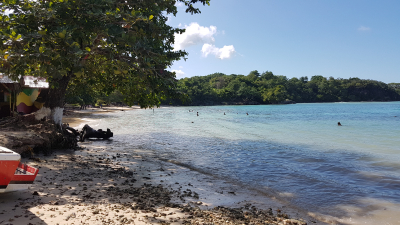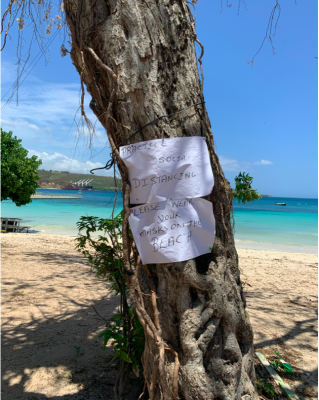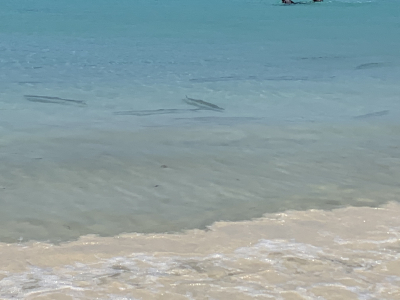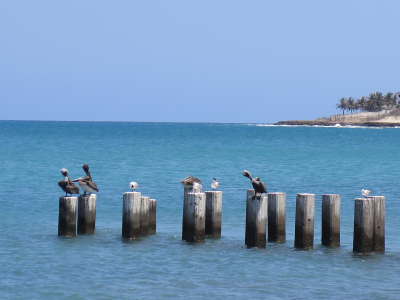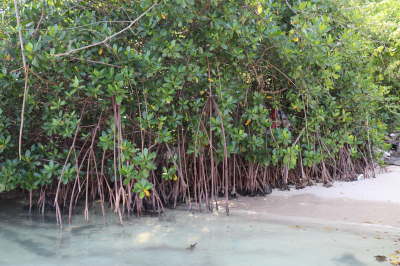The Atlantic Hurricane Season kicks off each year on June 1 and ends on November 30. For Caribbean people, particularly for those in coastal communities, these six months are filled with anxiety and concern over their property and livelihoods in the event of a tropical storm or hurricane, and with good reason. When a hurricane strikes a coastal area, it brings many serious hazards including heavy rains, high winds and storm surge. All of these combined cause flooding and also push seawater onshore, flooding towns near the coast, and can cause major damages, injuries and loss of life. As an example, Hurricane Gilbert of 1988 caused more than US$900 million in damage, much of which was in coastal areas. With climate change expected to increase the overall intensity and frequency of storms, with likely devastating impacts on vulnerable island communities, beaches represent an important line of defence. But what is a beach?
Image: A street in Kingston in the immediate aftermath of Hurricane Gilbert. (Source: Loop News Jamaica)
Image: Storm Surge in eastern Kingston during Hurricane Sandy in 2012 (Source: NY Daily News)
There are different kinds of beaches – some are made from sand and pebbles washed down by rivers, others consist of coral skeletons and crushed shells, sand excreted by certain types of marine animals such as parrotfish, and some kinds of seagrass and algae break down to form sand. Coral reefs protect the beach from storms, and beaches protect the land. If the conditions that cause beaches to develop and persist over time are disrupted, beaches begin to lose their sand. Beaches are made up of different types of sediment which is held in place by the shape of the coast, seagrass meadows and beach vegetation. Because beach sediment is constantly being moved around by natural forces like wind and waves, beaches can best be described as SAND IN MOTION. Ocean currents and storms move sand up and down the coast and sometimes sand is held in banks on the floor of the sea. Sand can also be stored at the back of the beach in sand dunes. Sand dunes release sand to the sea in storm conditions; in calmer conditions, sand doesn’t move around as much and tends to accumulate on the beach.
Image: Different kinds of beaches (Source: www.theswimguide.org)
Most importantly, beaches are key ecosystems in coastal zones that provide many ecosystem services. Ecosystem services are the many and varied benefits to humans provided by the natural environment and from healthy ecosystems. One such service is that beach and dune systems are the first line of defence against storms, acting as a buffer between storm waves and coastal development or infrastructure. During storms, waves reach the beach and dunes before they get to properties on land. The beach and dune system absorb wave energy and reduces damage to upland structures.
Image: Vegetated sand dunes at Duncan’s Bay Beach, Trelawny
In addition to providing coastal protection, beaches are an important source of income, recreation and cultural values, supporting a wide number of economic and social activities. They also provide essential habitats for numerous plants and animal species, as well as serve as a link between marine and terrestrial environments. However, as the global climate changes, coastal storms and hurricanes are likely to increase. In fact, the combined impacts of climate change and increasing population pressures on coastal areas for living and recreation have placed beach ecosystems under severe pressure.
As a Small Island Developing State, beaches are central to Jamaican lives and livelihoods. With the multiple threats challenging the health of Jamaica’s beaches, we must act now as individuals and collectively, locally and nationally, to protect valuable sandy beaches and critical adjacent ecosystems that serve to protect and provide for us.
